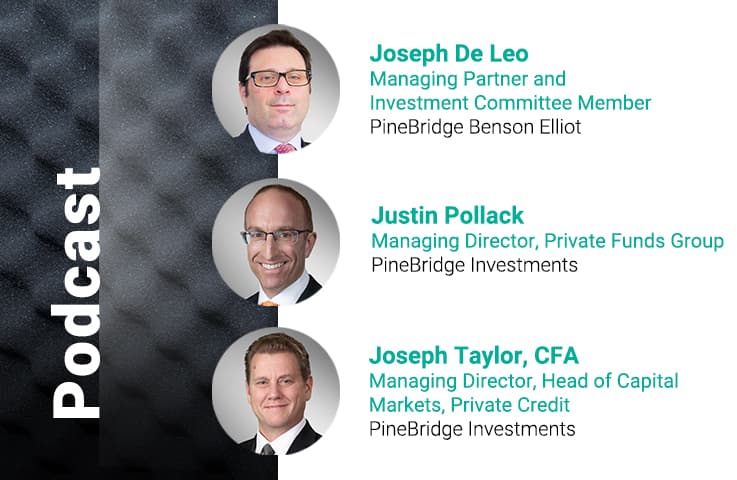Private Credit Snapshot: Is the Direct Lending Market Running Too Hot?

Joseph Taylor, CFA
Managing Director, Head of Capital Markets

Total sponsored middle-market loan volume soared to record highs in 2021, reaching $196 billion for the year, with growth driven by pent-up merger and acquisition (M&A) activity after a Covid-related cooldown in 2020. Of this total, direct lending volume contributed $131 billion – double 2020’s level. In the fourth quarter alone, direct lending volume hit US$55 billion, 60% above the prior high set just the quarter before (see chart).
While some pullback is likely in 2022, M&A-related loan volumes, including new leveraged buyouts (LBOs) and add-on deals, are expected to remain robust, though activity may be tempered by rising rates and geopolitical risks. Record levels of dry powder across private equity and private credit markets, combined with continued demand from companies seeking growth, generational wealth transfers, and professionalization, have all been factors contributing to this middle market activity, creating stiffer competition for quality assets. This increases the potential for spread compression and more aggressive financing terms (fewer covenants and lender protections, along with higher leverage), and in turn, higher potential risk.
Bottom line? While opportunities appear plentiful, this environment underscores the need for a selective, disciplined approach that puts safety first.
Sponsored Middle-Market Loan Volume Soared in 2021

Source: Refinitiv LPC as of 31 December 2021. The middle market is defined as issuers with revenues of US$500 million and below and a total loan package of US$500 million and below. The direct lending middle market is defined as non-syndicated facilities, no non-titled lender. Unitranche and bilateral loans, deals clubbed over US$150 million deal size, facilities that go unreported, privately placed second-liens, mezzanine and seller notes.
Disclosure
Investing involves risk, including possible loss of principal. The information presented herein is for illustrative purposes only and should not be considered reflective of any particular security, strategy, or investment product. It represents a general assessment of the markets at a specific time and is not a guarantee of future performance results or market movement. This material does not constitute investment, financial, legal, tax, or other advice; investment research or a product of any research department; an offer to sell, or the solicitation of an offer to purchase any security or interest in a fund; or a recommendation for any investment product or strategy. PineBridge Investments is not soliciting or recommending any action based on information in this document. Any opinions, projections, or forward-looking statements expressed herein are solely those of the author, may differ from the views or opinions expressed by other areas of PineBridge Investments, and are only for general informational purposes as of the date indicated. Views may be based on third-party data that has not been independently verified. PineBridge Investments does not approve of or endorse any republication of this material. You are solely responsible for deciding whether any investment product or strategy is appropriate for you based upon your investment goals, financial situation and tolerance for risk.


